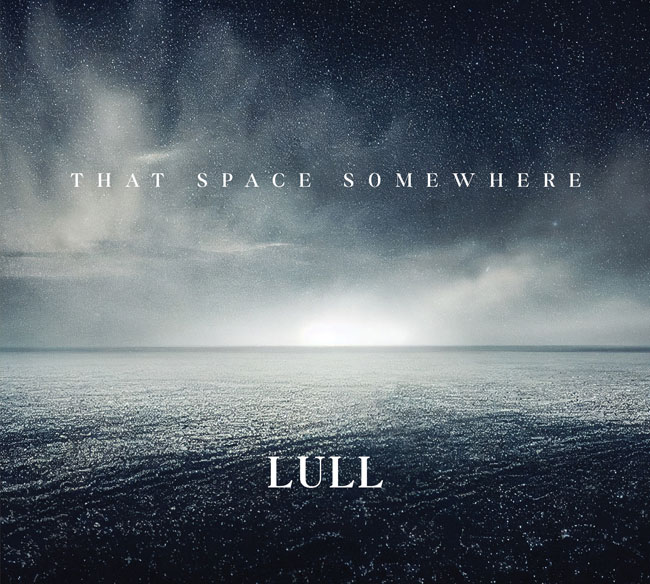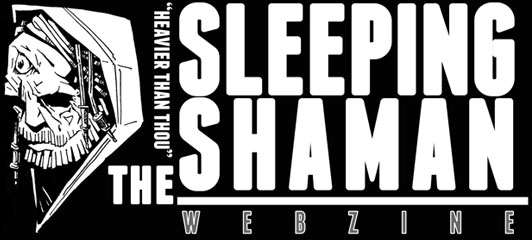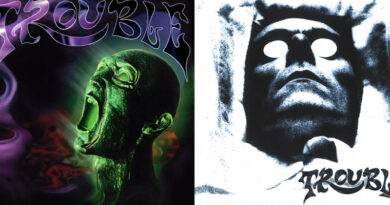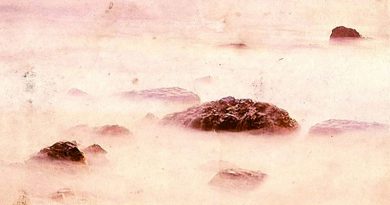Review: Lull ‘That Space Somewhere’
Mick Harris, the man generally credited as the drummer who popularised the blastbeat, the only member of Napalm Death to play on both the A and B sides of the legendary Scum album as well as sitting behind the kit for the likes of Doom and Extreme Noise Terror has a long and rich history which has sought to push the boundaries of musical convention.

Having departed the grindcore luminaries in 1991, he has collaborated with the likes of James Plotkin, Justin Broadrick and John Zorn as well as founding the dark dub experimental electronic act Scorn. In his quest to further his love of musical subversion and exploration, Harris has eschewed the traditional approach to creating ‘songs’ and has delved into drone and manipulation of heavy frequencies alongside an often minimalist approach.
The Lull project dates back to 1990 and reflects a more space and sound orientated starting point using software to create something fresh and isolationist. Between its formation and initial hiatus in 2008, Harris would go on to release eight albums and numerous EPs that incorporated this mission statement. Whilst the events of the global pandemic doubtless had a huge impact on musicians the world over, the enforced shutdown gave Harris the ability to focus and find the time to immerse himself once more in his love of ambient escapism.
That Space Somewhere, the ninth album and first attempt at stepping into the Lull mindset since 2007, has clearly revitalised its creator, allowing him to channel a desire to explore the idea of creating an atmosphere, a soundscape that encapsulates a feeling, rather than craft a more conventional musical concept. To understand Lull you have to appreciate that this isn’t meant to be an album in the traditional sense. The approach to the project is much more in tune with the works of fellow former Napalm Death man Justin Broadrick’s Jesu with his glacial thematic building, or Trent Reznor and Atticus Ross’ oft misunderstood work on Nine Inch Nails Ghosts series.
The focus on the album lies with the creation of space and stillness. Over the course of the four tracks, all of which add up to nearly an hour of sound, Harris pushes the notion of droning, cavernous reverb to the point of almost granular focus. It is easy to listen to tracks like Expanse, to name but one, and say it doesn’t sound like it does anything. Certainly, on the surface the absence of vocals, the cold, almost passionless manipulation of echoing noise, born from digital samples, reverb pedals and the stark minimalist delivery would do little to dissuade that perception.
However, to understand That Space Somewhere, you need to appreciate that it’s a study in sound. Harris himself desires to replicate a sense of drifting, a stillness and a peace that is almost incidental to the world around him. As an avid fisherman, he revels in the ability to lose himself in the quiet, clear his mind and be at peace with the universe.
the swelling electronics are eery and smothering…
This is achieved by the alien like detachment of the tools he uses. The opening piece, Range, feels like the soundtrack to an object floating in space. The ebb and flow of the echoing continuous drone rises and falls, continually moving and shifting in patterns, introducing new sounds and stripping them back before building again. It could best be described as watching a satellite, or meteorite, slowly spinning aimlessly through the dark void of space, detached, and yet somehow imbued with a serene sense of beauty.
The journey feels as inevitable as the changing seasons, almost as subtle and barely noticeable. The aforementioned Expanse continues this momentum, or lack of, with only the second or two break between this and the opener Range, to denote that a change as really taken place. Less directly reverb heavy, it feels lightweight, like a gentle breeze blowing across an open desert plain, the slow bending of the flora and fauna as it moves with seeming unstoppable inertia.
Unplumbed echoes and swirls, the swelling electronics are eery and smothering, the contrast between the louder, more intrusive moments and the stark, hollow ringing can give both a sense of tranquillity and unsettling oppression. The final movement in That Space Somewhere and shortest track (albeit just over the ten-minute mark) Way is somehow warmer and richer, like the rays of sunlight breaking through a misty morning and rounds off the album without the listener feeling like there has been much dramatic movement, but definitely the feeling of a journey taken, and time passed.
Therein lies the core of Lull. This is not an experience that will leave the listener shellshocked or with a sense that they’ve had a story told to them. This is not Jane Doe, there is no dramatic or seismic change and violent sense of narrative being conveyed, but rather a searching feeling for a passive state of being.
This is something that deals with the concept of absence, a stripped back sense of existing within a vacuum and letting time and external chaos wash over you and pass you by. I previously alluded to the similarities of Ghosts and in truth, that creative outpouring probably owes a debt to the earlier works of Harris.
Like those releases, this will have its detractors and will no doubt be misunderstood by people drawn through curiosity by the name attached. If anything, this is the antithesis of extreme metal, extreme stillness if you will. What it does show is a man at peace with himself creating a cinematic submersive experience and inviting the listener to join him on this most exploratory of journeys.
Label: Cold Spring Records
Band Links: Bandcamp | Twitter | Instagram
Scribed by: Mark Hunt-Bryden



